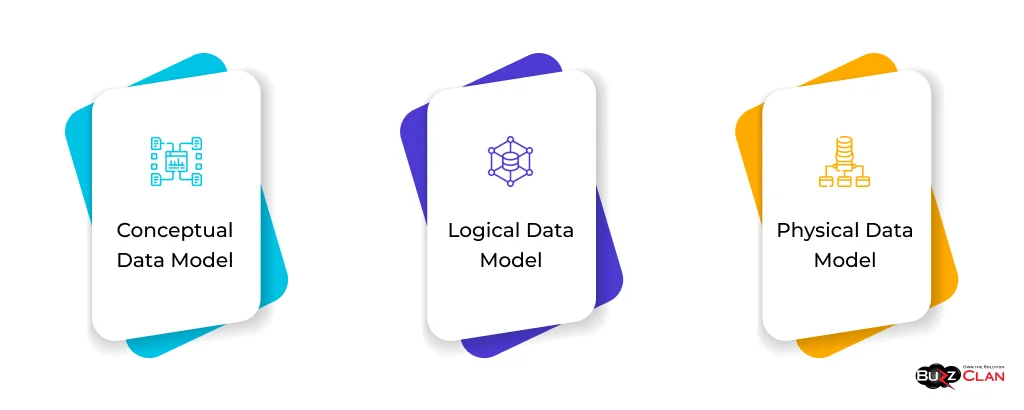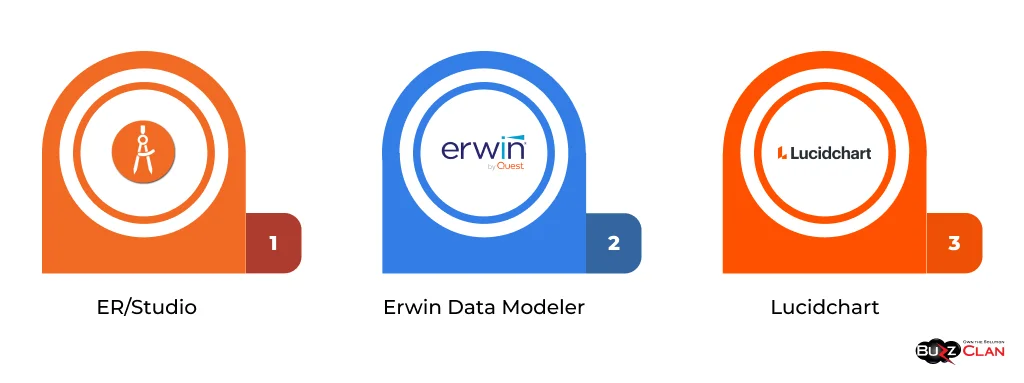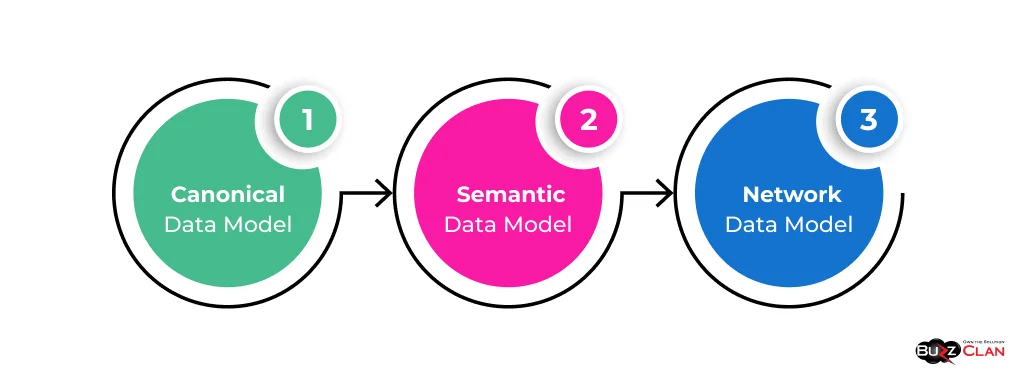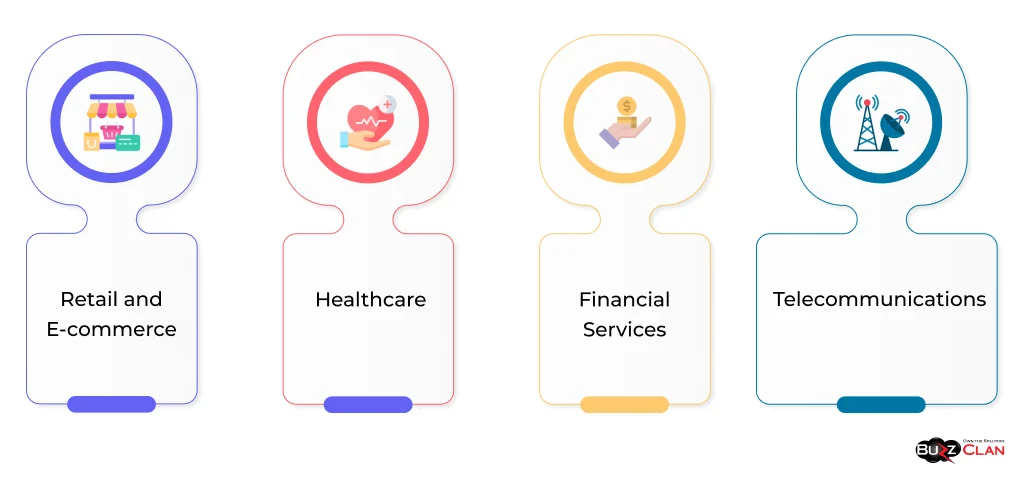Mastering Data Modeling: A Comprehensive Guide
Priya Patel
Apr 18, 2024
Introduction
Organizations collect and store massive amounts of data in today's data-driven business landscape. However, more than data is needed to drive informed decision-making and achieve business objectives. To truly harness the power of data, it is essential to have a well-structured and organized data management system. This is where data modeling comes into play.
Data modeling visually represents an organization's data, including the relationships and dependencies between different data entities. It serves as a blueprint for designing and implementing a database or data warehouse, ensuring that data is stored efficiently, accurately, and in a way that supports business requirements.
In this comprehensive article, we will explore the basics of data modeling, its historical context, and the role of a data modeler. We will also discuss the different types of data models, the process of creating data models using SQL, and the tools and techniques used in data modeling.
Furthermore, we will delve into advanced concepts such as canonical, semantic, and network data models and examine how data modeling is applied in specialized fields like customer 360 analytics. We will present case studies highlighting the impact of effective data modeling and discuss the challenges and solutions in data modeling.
Finally, we will explore data modeling as a career, including the skills required to become a data modeler and the career paths available. By the end of this article, you will have a comprehensive understanding of data modeling and its significance in modern data management.
The Basics of Data Modeling
Data modeling visually represents an organization's data, including the relationships and dependencies between different data entities. It involves defining data objects' structure, attributes, and relationships and the rules and constraints governing how data is stored and accessed.
The concept of data modeling has evolved since the 1960s. In the early days of computing, data was typically stored in flat files, which made it difficult to manage and analyze large volumes of data. As databases became more prevalent, the need for a structured approach to data management became apparent.
Data modeling emerged as a discipline to address this need, providing a systematic way to design and organize data. A data modeler works closely with business stakeholders, analysts, and developers to understand and translate an organization's requirements into a logical and physical data model.
A data modeler is responsible for identifying the key data entities, defining their attributes and relationships, and ensuring that the data model aligns with business goals and requirements. They also play a crucial role in data governance, ensuring data is accurate, consistent, and secure.
Types of Data Models

There are several data models, each serving a specific purpose and level of abstraction. The three main types of data models are:
Conceptual Data Model
A conceptual data model is a high-level representation of an organization's data, focusing on the main data entities and their relationships. It provides a broad overview of the data landscape and is often used for communication and alignment between business stakeholders and technical teams. Conceptual data models are typically created using entity-relationship (ER) diagrams or Unified Modeling Language (UML) class diagrams.
Logical Data Model
A logical data model is a more detailed representation of an organization's data, building upon the conceptual data model. It defines the specific attributes, data types, relationships between data entities, and the business rules and constraints governing data integrity. Logical data models are often created using ER diagrams or relational schemas.
Physical Data Model
A physical data model is a low-level representation of how data is physically stored in a database or data warehouse. It considers the specific database management system (DBMS) used and includes details such as table structures, indexes, partitioning, and performance optimizations. Physical data models are typically created using SQL data definition language (DDL) scripts.
Each data model serves a different purpose and is used at various stages of the data modeling process. Conceptual data models are used for high-level planning and communication, logical data models for detailed design and analysis, and physical data models for implementation and optimization.
Data Modeling in SQL
Structured Query Language (SQL) is the standard language for managing and manipulating relational databases. SQL plays a crucial role in data modeling, providing the means to define and implement the physical data model in a database.
The process of creating data models using SQL involves several steps:
| Practices | Description |
| Define Tables | Tables are the fundamental building blocks of a relational database. In SQL, tables are defined using the `CREATE TABLE` statement, which specifies the table name, column names, data types, and constraints. |
| Establish Relationships | Relationships between tables are defined using primary and foreign keys. A primary key uniquely identifies each record in a table, while a foreign key establishes a link between two tables based on a common column. SQL provides the `PRIMARY KEY` and `FOREIGN KEY` constraints to enforce these relationships. |
| Apply Normalization | Normalization is organizing data in a database to minimize redundancy and dependency. It involves breaking down tables into smaller, more focused tables and establishing relationships between them. SQL supports various normal forms (1NF, 2NF, 3NF) to ensure data integrity and consistency. |
| Implement Indexes | Indexes are used to improve query performance by allowing faster data retrieval. In SQL, indexes are created using the `CREATE INDEX` statement, which specifies the table and columns to be indexed. |
| Enforce Constraints | Constraints enforce data integrity and consistency. SQL provides various constraints, such as `NOT NULL`, `UNIQUE`, `CHECK`, and `DEFAULT`, which can be applied to columns or tables. |
When creating data models using SQL, following best practices and standards to ensure data integrity, performance, and maintainability is essential. This includes using meaningful table and column names, applying appropriate data types, implementing proper indexing strategies, and adhering to normalization principles.
Data Modeling Tools and Techniques
While SQL is the foundation for implementing data models, various tools and techniques aid the process. These tools provide visual interfaces, automation capabilities, and collaboration features to streamline the design and management of data models.
Some popular data modeling tools include:

ER/Studio is a powerful data modeling tool that supports logical and physical data modeling. It provides a user-friendly interface for creating ER diagrams, generating SQL scripts, and reverse engineering existing databases.
Erwin Data Modeler is a comprehensive data modeling solution that enables the creation of conceptual, logical, and physical data models. It offers model comparison, impact analysis, and data lineage to facilitate data governance and compliance.
Lucidchart is a web-based diagramming tool that supports data modeling through its ER diagram and UML modeling capabilities. It provides a collaborative platform for teams to design and share real-time data models.
When choosing a data modeling tool, consider factors such as ease of use, integration with existing systems, scalability, and collaboration features. The tool should align with the organization's data modeling methodology and support the desired level of abstraction and detail.
In addition to tools, several best practices and techniques can enhance the data modeling process:
Data modeling should be an iterative process, starting with a high-level conceptual model and progressively refining it into a detailed logical and physical model. This approach allows for continuous feedback and refinement based on evolving business requirements.
Effective data modeling requires close collaboration between business stakeholders, analysts, and technical teams. Regular communication and feedback sessions ensure that the data model aligns with business needs and is understood by all parties.
Data profiling and analysis techniques help understand existing data's structure, quality, and relationships. These techniques can uncover data anomalies, inconsistencies, and dependencies, informing the data modeling process and improving data quality.
Incorporating data governance and quality principles into the data modeling process ensures that data is accurate, consistent, and secure. This includes defining data standards, implementing data validation rules, and establishing ownership and stewardship roles.
By leveraging the right tools and techniques, organizations can streamline the data modeling process, improve data quality, and ensure that the data model effectively supports business objectives.
Advanced Concepts in Data Modeling

In addition to the fundamental types of data models, several advanced concepts and specialized data modeling approaches cater to specific business needs and domains.
A canonical data model is a standardized and unified data representation across an organization. It defines a common vocabulary and structure for data entities, attributes, and relationships, ensuring consistency and interoperability between systems and applications. Canonical data models benefit integration scenarios, where data must be exchanged and understood across multiple systems.
A semantic data model focuses on the meaning and context of data rather than just its structure. It captures the relationships between data entities based on their semantics and business concepts. Semantic data models often use ontologies and knowledge graphs to represent domain-specific knowledge and enable intelligent data discovery and analysis.
A network data model is a non-hierarchical approach to representing relationships between data entities. It allows for complex many-to-many relationships and can handle cyclic dependencies. Network data models are commonly used in graph databases and social network analysis, focusing on the connections and interactions between entities.
In addition to these advanced concepts, data modeling is applied in specialized fields to address specific business needs. One such field is customer 360 analytics, which aims to provide a comprehensive view of customers by integrating data from various sources, such as sales, marketing, and customer service.
Data modeling plays a crucial role in customer 360 analytics by defining a unified customer data model that captures all customers' relevant attributes, interactions, and behaviors. This model is the foundation for building customer profiles, segmentation, and personalized experiences.
Case studies highlighting the impact of effective data modeling can demonstrate the tangible benefits it brings to organizations. For example, a retail company may use data modeling to create a unified view of its customers, products, and sales transactions. By analyzing this integrated data, the company can gain insights into customer preferences, optimize inventory management, and personalize marketing campaigns, increasing sales and customer satisfaction.
Data Modeling for Different Business Needs

Data modeling is not a one-size-fits-all approach. Different business sectors and industries have unique data requirements and challenges that need to be addressed through tailored data modeling strategies.
In retail and e-commerce, data modeling focuses on capturing customer data, product catalogs, sales transactions, and inventory management. The data model should support real-time analytics, personalized recommendations, and supply chain optimization.
Healthcare data modeling involves sensitive patient information, medical records, and clinical data. The data model must ensure data privacy, security, and compliance with regulations such as HIPAA. It should support interoperability between healthcare systems and enable advanced patient care and medical research analytics.
Data modeling in the financial services industry emphasizes risk management, fraud detection, and regulatory compliance. The data model should capture financial transactions, customer profiles, and market data, enabling real-time monitoring, risk assessment, and financial reporting.
Telecommunications data modeling involves handling large volumes of data related to network infrastructure, customer usage patterns, and service provisioning. The data model should support network optimization, customer segmentation, and real-time troubleshooting.
It is essential to involve business stakeholders throughout the data modeling process to align data models with business goals. This includes understanding their data requirements, key performance indicators (KPIs), and decision-making needs. The data model should support the organization's strategic objectives and enable data-driven insights.
Data governance and quality are critical considerations in data modeling. The data model should incorporate data governance policies like ownership, access controls, and lineage. Data quality measures, such as data validation rules and data cleansing processes, should be built into the data model to ensure the accuracy and reliability of data.
Data Modeling Challenges and Solutions
While data modeling offers numerous benefits, it also comes with its own set of challenges.
Some common challenges faced during data modeling include:
| Challenges | Description |
|---|---|
| Data Complexity | As organizations collect and integrate data from various sources, the complexity of data increases. Dealing with heterogeneous data formats, inconsistent data structures, and data silos can make data modeling a challenging task. |
| Scalability and Performance | The data model must be designed to scale and perform efficiently as data volumes grow. This includes optimizing the data structure, implementing appropriate indexing strategies, and leveraging technologies like data partitioning and parallel processing. |
| Data Quality and Consistency | Data quality and consistency across different systems and applications is a significant challenge. To maintain data integrity, data modeling should incorporate data validation rules, data cleansing processes, and data reconciliation mechanisms. |
| Evolving Business Requirements | Business requirements and data needs are constantly evolving. The data model must be flexible and adaptable to accommodate changes in business processes, new data sources, and emerging use cases. |
To overcome these challenges, organizations can adopt several strategies:
Organizations can adopt an incremental and agile approach to data modeling instead of simultaneously trying to model the entire data landscape. This involves focusing on specific business domains or use cases and iteratively refining the data model based on feedback and evolving requirements.
Establishing a robust data governance framework helps manage data complexity, ensure data quality, and maintain consistency across the organization. This includes defining data standards, assigning data ownership and stewardship roles, and implementing data quality processes.
Collaboration between business stakeholders, data modelers, and technical teams is crucial for aligning the data model with business needs. Regular communication, workshops, and feedback sessions help identify gaps, resolve conflicts, and ensure a shared understanding of the data model.
Leveraging advanced technologies and tools can help address scalability and performance challenges. This includes using big data platforms like Hadoop and Spark to process large datasets, employing data virtualization techniques for real-time data integration, and utilizing cloud-based services for elastic scalability.
As data continues to grow in volume, variety, and velocity, the future of data modeling lies in embracing emerging trends and technologies. Some key trends in data modeling include:
Graph data modeling is gaining popularity due to its ability to represent complex relationships and handle highly connected data. Graph databases and graph query languages like Cypher and Gremlin are becoming increasingly adopted for use cases such as social network analysis, fraud detection, and recommendation systems.
Machine learning and artificial intelligence techniques are integrated into data modeling processes to automate and optimize data modeling tasks. This includes using machine learning algorithms for data discovery, quality assessment, and pattern recognition.
Data mesh is an emerging architectural pattern emphasizing decentralized data ownership and domain-driven data management. It involves creating a self-serve data infrastructure where domain teams are responsible for their data products and quality. Data modeling in a data mesh architecture focuses on defining domain-specific data models and enabling data interoperability through standardized interfaces.
By staying abreast of these trends and adopting innovative approaches, organizations can future-proof their data modeling practices and stay ahead in the rapidly evolving data landscape.
Data Modeling as a Career
Data modeling is a critical skill in today's data-driven world, and it offers exciting career opportunities for individuals with a passion for data and a keen eye for detail. Let's explore what it takes to become a data modeler and the career paths available.
A data modeler is responsible for designing and implementing the structure and organization of an organization's data. They work closely with business stakeholders, data architects, and developers to understand data requirements, design data models, and ensure data integrity and consistency.
| No. | Responsibility |
|---|---|
| 1. | Gathering and analyzing business requirements to understand data needs. |
| 2. | Creating conceptual, logical, and physical data models using ER diagrams, UML, and SQL. |
| 3. | Collaborating with cross-functional teams to align the data model with business goals. |
| 4. | Ensuring data quality, security, and compliance with industry standards and regulations. |
| 5. | Optimizing data models for performance, scalability, and maintainability. |
| 6. | Documenting data models and maintaining data dictionaries and metadata repositories. |
| No. | Essential Skills |
|---|---|
| 1. | Strong understanding of database concepts, data structures, and data modeling techniques. |
| 2. | Proficiency in SQL and data modeling tools like ER/Studio, Erwin Data Modeler, or Lucidchart. |
| 3. | Knowledge of data integration, warehousing, and governance principles. |
| 4. | Familiarity with industry-specific data requirements and regulations. |
| 5. | Analytical and problem-solving skills to handle complex data challenges. |
| 6. | Excellent communication and collaboration skills to work effectively with diverse stakeholders. |
The career path for a data modeler typically starts with an entry-level position, such as a data analyst or a junior data modeler. With experience and expertise, one can progress to senior data modeler, lead data modeler, or data architect roles. Some data modelers also transition into roles like data engineer, data scientist, or data governance specialist.
Continuous learning and skill development are crucial to a data modeling career. It is essential to keep up with the latest trends, technologies, and best practices in data modeling. Pursuing certifications like the CDMP (Certified Data Management Professional) or the CMLDP (Certified Machine Learning and Data Pipeline Professional) can demonstrate expertise and enhance career prospects.
Networking and engaging with the data modeling community through conferences, workshops, and online forums can provide valuable insights and opportunities for growth. Sharing knowledge through blogs, presentations, or mentoring can establish thought leadership and credibility in the field.
Conclusion
Data modeling is a fundamental discipline in today's data-driven landscape. It provides the foundation for organizing, structuring, and managing data effectively to support business objectives and enable data-driven decision-making.
Throughout this article, we have explored the various aspects of data modeling, from its basic concepts and types to advanced techniques and real-world applications. We have discussed the role of SQL in data modeling, the tools and techniques used, and the challenges and solutions in data modeling.
We have also highlighted the importance of aligning data models with business needs, incorporating data governance and quality, and adapting data modeling strategies for different industries and domains. The future of data modeling lies in embracing emerging trends and technologies, such as graph data modeling, machine learning, and data mesh architecture.
Adopting data modeling best practices is crucial for organizations aiming to leverage their data assets' full potential. This includes fostering collaboration between business and technical teams, establishing a robust data governance framework, and continuously refining and evolving the data model to meet changing requirements.
Data modeling offers exciting career opportunities for individuals with a passion for data and a desire to impact organizations. Aspiring data modelers can embark on a rewarding and dynamic career path by developing the necessary technical skills, business acumen, and communication abilities.
We encourage readers to engage with the data modeling community, share their experiences, and seek guidance and support in their data modeling endeavors. Whether you are a business stakeholder looking to optimize your data management practices or an aspiring data modeler seeking to build a successful career, embracing data modeling is a vital step toward unlocking the true value of your data.
FAQs

Get In Touch
